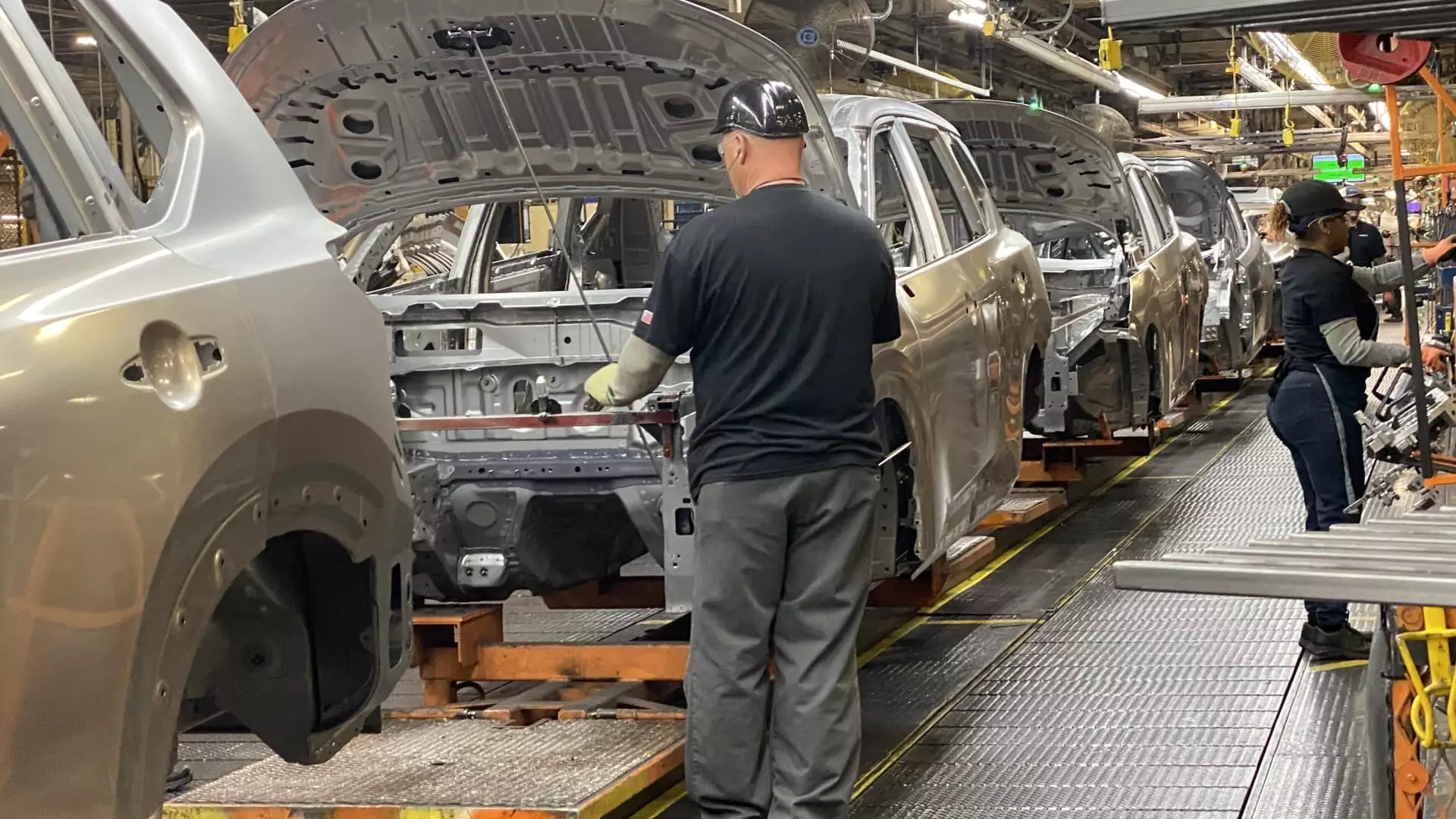Since he took office, President Donald Trump’s trade policies have created shockwaves across various sectors, and the automotive industry is no exception. His administration’s decision to impose a 25% tariff on imported vehicles and parts is not just an economic maneuver; it represents a fundamental shift in how our economy operates. Analysts warn that the repercussions may not only inflict financial pain on consumers and manufacturers but could threaten the very fabric of an industry that constitutes a significant portion of America’s economic backbone.
The Inevitable Price Surge
One of the most immediate consequences of these tariffs is a dramatic increase in vehicle prices. According to industry experts, we are looking at an average price hike of $2,000 to $4,000 for new vehicles over the next year. This isn’t just speculation; it is a startling reality based on economic analyses that have become alarmingly grim. Isn’t it fascinating yet horrifying that we saw the average new vehicle cost hovering around $50,000 even before these tariffs were implemented? The added burden makes cars less affordable for the average consumer, particularly those who are already stretched thin amid rising inflation rates.
These escalating costs don’t just stop at U.S. buyers; they reverberate throughout the entire supply chain. In a society that openly champions the free market, such interventionist policies reveal a concerning disconnect between political ideologies and the economic realities faced by everyday Americans. Why should consumers suffer because of political posturing?
Economic Ripples: Beyond the Showroom
When you consider that analysts predict a staggering reduction of around 2 million vehicles sold annually in the U.S. and Canada due to these tariffs, it’s clear that the impacts stretch far beyond just sales figures. These “massive implications,” as articulated by financial analysts, will essentially drag down the broader economy. Fewer vehicles sold means less revenue circulating, which in turn limits consumer spending power. We could be staring at a recession simply because of ill-conceived trade policies.
Local economies, particularly those reliant on the automotive sector, will feel the repercussions intensely. A few million fewer vehicle sales translate into less income for dealerships, service providers, and ancillary businesses that depend on a healthy automotive market. The ripple effects could be catastrophic at a local level, especially for communities that revolve around the automobile industry, laying bare the vulnerability of our economic constructs.
Manufacturers Between a Rock and a Hard Place
Automakers face a no-win situation that will ultimately impact their longevity and viability. Companies like General Motors and Ford are stuck between inflated costs and dwindling sales. They can either absorb the rising expenses, which would eat into profit margins, or pass those costs along to consumers, further stifling demand—a dual dilemma that showcases the fragility of businesses in a competitive market.
To cope, some manufacturers are experimenting with strategies like temporary employee pricing deals or halting shipments to cushion their bottom line. However, these are only band-aid solutions; deeper systemic changes will be necessary to navigate this turbulent landscape. For example, companies like Hyundai are adopting a “wait-and-see” approach by putting a temporary pause on price hikes. But how long can this be sustained before the realities of tariffs come crashing down on their operations as well?
The Consumer Sentiment Crisis
The reality is grim: consumer sentiment has plummeted to levels unseen since 1981, primarily owed to inflation concerns spiraling out of control. As buyers see rising vehicle prices and diminishing purchasing power, the automotive industry’s long-term prospects become murky. The fear of purchasing an overpriced vehicle may lead consumers to hold off on buying, creating a self-fulfilling prophecy where lower sales further drive up prices.
The question persists: how do we reconcile the ideals of a thriving free market with an administration’s proclivity for economic interventionism? Tariffs may have been presented as a protective measure, but they risk devolving into an infringement on consumer rights and economic freedom. Shouldn’t we be striving for a market that fosters competition, rather than one that flails beneath the weight of artificially imposed limits?
A Downward Spiral for Affordability
Affordability has been a concerning issue for years, and the introduction of new tariffs threatens to exacerbate that challenge drastically. With many new vehicles already priced around $50,000, the additional costs associated with the tariffs could lead to vehicle prices spiraling to levels that average families simply cannot afford. The financial implications extend beyond initial purchases, as shifting auto loan rates mean that financing has also become a struggle, with interest rates for new vehicles climbing higher than we’ve seen in years.
As we stand on the precipice of an uncertain financial landscape, isn’t it worth asking if there are better, more sustainable paths forward? The automotive industry can and should be thriving, not sidelined by policies that seem disconnected from economic reality. This is not merely about cars; it’s about the future of commerce, consumer rights, and the very principles of a free market.

